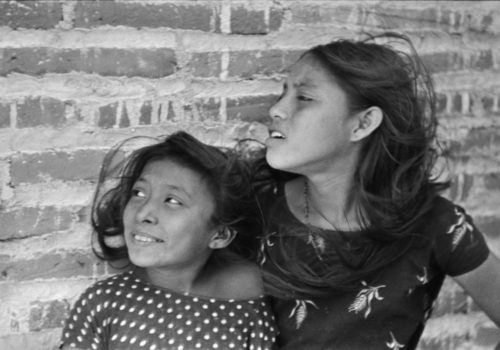Of Henri Cartier-Bresson’s book Images à la Sauvette, published simultaneously in France by Tériade and in the United States by Simon and Schuster in 1952, mainly the English title, The Decisive Moment, has gone down in history. The “decisive moment” captured the imaginations of many generations of photographers around the world and continues to exert fascination more than sixty years later. “Someone showed me a copy of Henri Cartier-Bresson’s book The Decisive Moment, and it changed my life and my own photography,” said Dennis Hopper. Mythical, the decisive instant is a unique event in the history of photography.
First, a bit of historical background. Aged 44, in 1952 Henri Cartier-Bresson was an accomplished photographer who had exhibited at the MoMA in New York in 1947 and the same year had created Magnum Photos with Robert Capa, David Seymour, William Vandivert, and George Rodger. While he purchased his first Leica in 1932 and had his first photography exhibition the following year, the 1930s were also a decade when he worked extensively for the cinema, either as Jean Renoir’s assistant, for example on the films Partie de Campagne and La Règle du Jeu, or as a director. Above all, however, Henri Cartier-Bresson traveled a lot around the world, bringing back images at a time when common mortals discovered the world through photographs in illustrated magazines. Henri Cartier-Bresson visited Mexico, the United States, Spain, India, China, the USSR—where he was the first photographer to be admitted since the outbreak of the Cold War in 1954—and, eleven years later, Japan… Images he took in all these countries broke new ground and were reprinted worldwide.
The volume The Decisive Moment includes 126 photographs taken on these distant voyages: from Madrid and London, Mexico and New York, to Chicago, Los Angeles, Pakistan, India, Indonesia, Singapore, Shanghai, Beijing, Cairo, Teheran…. There are also photographs from France, such as the famous Sunday on the Banks of the Marne, 1938, as well as numerous portraits of strangers encountered along the way and of celebrities, including Truman Capote, William Faulkner, Jean-Paul Sartre, and, of course, Henri Matisse, the artist who designed the cover of the book.
The exhibition at the Fondation Henri Cartier-Bresson presents a selection of vintage prints complemented by archival documents and letters pertaining to the publication of the book. The exhibition aim is to let the viewers see the photographs as much as help them discover the context in which the book was put together. Two inscriptions handwritten by the photographer in the copies of the book showcased in the exhibition, bring our attention to the fact that Henri Cartier-Bresson was less dogmatic about the decisive moment that history would have us believe: in the first one, after the title The Decisive Moment, he added, “il n’y en a pas, le temps coule” [“there isn’t one, time passes”]; in the second, he inserted, The “more or less” Decisive Moment… For, after all, there are many ways to interpret the phrase. To learn more, read in our today’s edition Agnès Sire’s essay entitled “The myth of the decisive instant: a trick or an epiphany,” first published by Éditions Textuel in 2009 in Revoir Henri Cartier-Bresson.
Sophie Bernard
Exhibition
Images à la Sauvette
From January 11 through April 23, 2017
Fondation Henri Cartier-Bresson
2, impasse Lebouis – 75014 Paris
www.henricartierbresson.org
Publication
In 2014, Steidl published a facsimile of the original edition of Images à la Sauvette, and the English version, The Decisive Moment, complemented by a booklet containing an essay by Clément Chéroux on the history of the publication.
€98
















